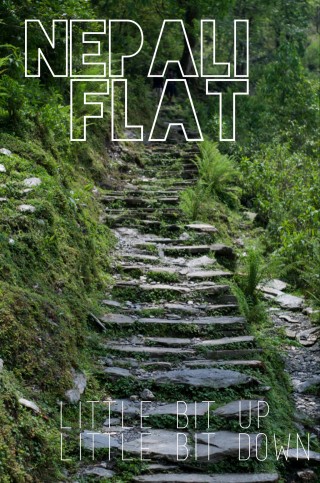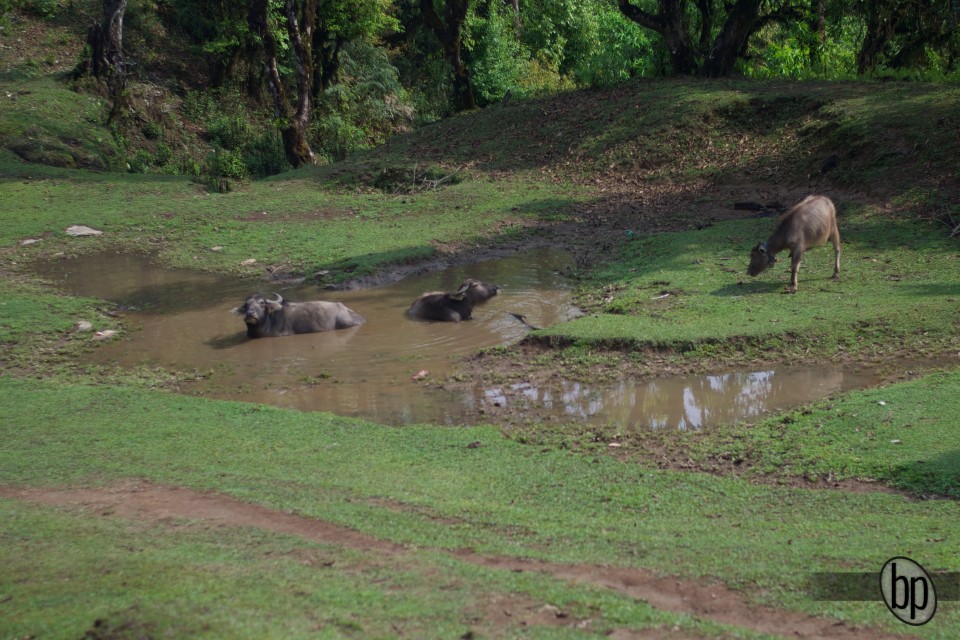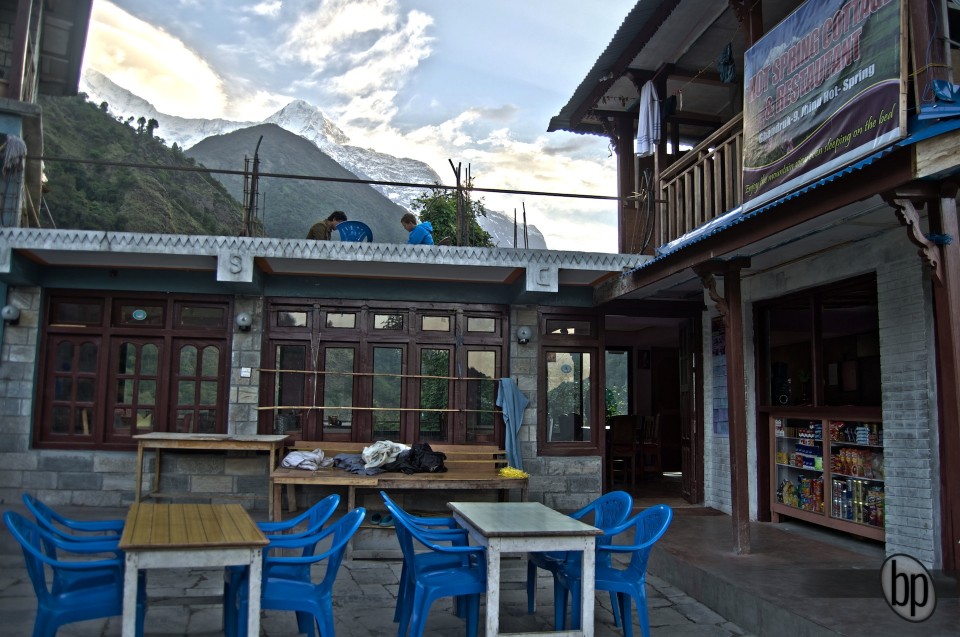
1. To journey on foot, especially to hike through mountainous areas.
I could have always used the other definition of “a slow, arduous journey” but thought that it was rarely applicable to our trip. Now for those of you not versed in the world of long distance walking, it actually is a fulfilling activity that can take you to remarkable places. While Nepal can’t say it turned the phrase (the Dutch did), they did make it popular and the country contains some of the most traveled routes the world over. Among the most popular treks in the world, the Annapurna circuit once was the premier trekking destination. While still popular, it’s notoriety has diminished as the region has been developed, most notably with the introduction of roads and electricity. The trek itself is only as hard as you want it to be. Some people opt to travel the entire circuit, some 150 miles, typically 15-20 days. Others (like us) explore a region of the circuit, taking alternate trails and visiting more villages.
The Terrain
 The Annapurna region of Nepal is at the edge of the Tibetan plateau. While the word plateau makes you think of a flat landscape, Nepal is anything but flat, or as the locals say “Nepali flat. Little bit up, little bit down.” The hills in Nepal, dwarf mountains. Most of the trails are so steep that the locals carved (or built) stone steps into the hill side, just to traverse the path between villages. Of the 45 miles that we traveled, I’d say that nearly two-thirds of the pathways were of carved or placed stone. It was amazing to think of the undertaking, placing/carving each step manually.
The Annapurna region of Nepal is at the edge of the Tibetan plateau. While the word plateau makes you think of a flat landscape, Nepal is anything but flat, or as the locals say “Nepali flat. Little bit up, little bit down.” The hills in Nepal, dwarf mountains. Most of the trails are so steep that the locals carved (or built) stone steps into the hill side, just to traverse the path between villages. Of the 45 miles that we traveled, I’d say that nearly two-thirds of the pathways were of carved or placed stone. It was amazing to think of the undertaking, placing/carving each step manually.
The locals speak of the elevation casually, stating “today is a downhill day!” That makes a person think it’s going to be an easy day, right. All it really means is that the ending point for the day is lower in elevation than the start. What they may not tell you is that you might still have to climb nearly 6,000 ft. to get there as you cross multiple valley floors along the way.
Some parts of the trail are almost jungle like in the lower elevations. It catches you a little off guard when you spent the night on top of a hill, a forest scene familiar to us in Montana. It was a little more humid than I was used to, but not bad, in the valleys. The views are breathtaking! If you only came for the view, it won’t disappoint. While Everest may be the king of mountains, many of the other Nepali mountains (in my opinion) are of greater grandeur. Many valleys contain fast pace rivers, unsafe to cross without a bridge. Rope bridges span many sections, short and wide.

The Fauna
The primary animals you see are cows (a lot of cows), goats, chickens and occasional sightings of other birds, water buffalo and dogs. While I didn’t see any, monkeys do live in the region, but not in high numbers. One of the most encountered creatures were leeches. Rather than encountering them in slow moving streams or still pools, they hang out on the ground, standing on their tails until they can latch onto something walking by. And latch on they did, there were few of us who didn’t pick one up than those who did. Quite disconcerting, but a part of the adventure.

The Lodging
In no area was I more surprised on this trip than with our lodging arrangement. We stayed in what are referred to as Tea Houses, basically small bed and breakfasts. The quality of tea houses vary. The establishments in the more prominent villages are typically the nicest. There was certainly no lack, at least one every 5-10 miles. The typical setup was a room with two beds, usually with a foam pad, pillow and quilt. There was anywhere from one bathroom per room down to one per establishment. The toilets were a mixture of the standard bowl we know so well and the “squatty potty” that needs no further explanation. There was typically electricity available, but not always on 24/7. There was always some sort of dining hall attached, with a kitchen beside it.
The Food
Jess already told you about Dhal Bhat, the lunch and dinner staple. Other than that, the dishes comprised of any combination of chicken, potatoes, rice, lentils and stewed tomatoes and onions. Every tea house had the same menu, down to the cover. There were some minor variations along the way, but almost always a variation of what you had already had. Breakfast food was a little more varied, but not by much. Breakfast was always served with the same jam and honey combo. Coffee and Tea were readily available, and greatly appreciated when waking up in the morning. If the food combinations started to feel claustrophobic, there was an assortment of Coke products, candy bars, chips and other items for sale to stave off palette boredom.
Now that that is out of the way, I can start on the adventurous 5 day journey. Stay tuned…


You must be logged in to post a comment.